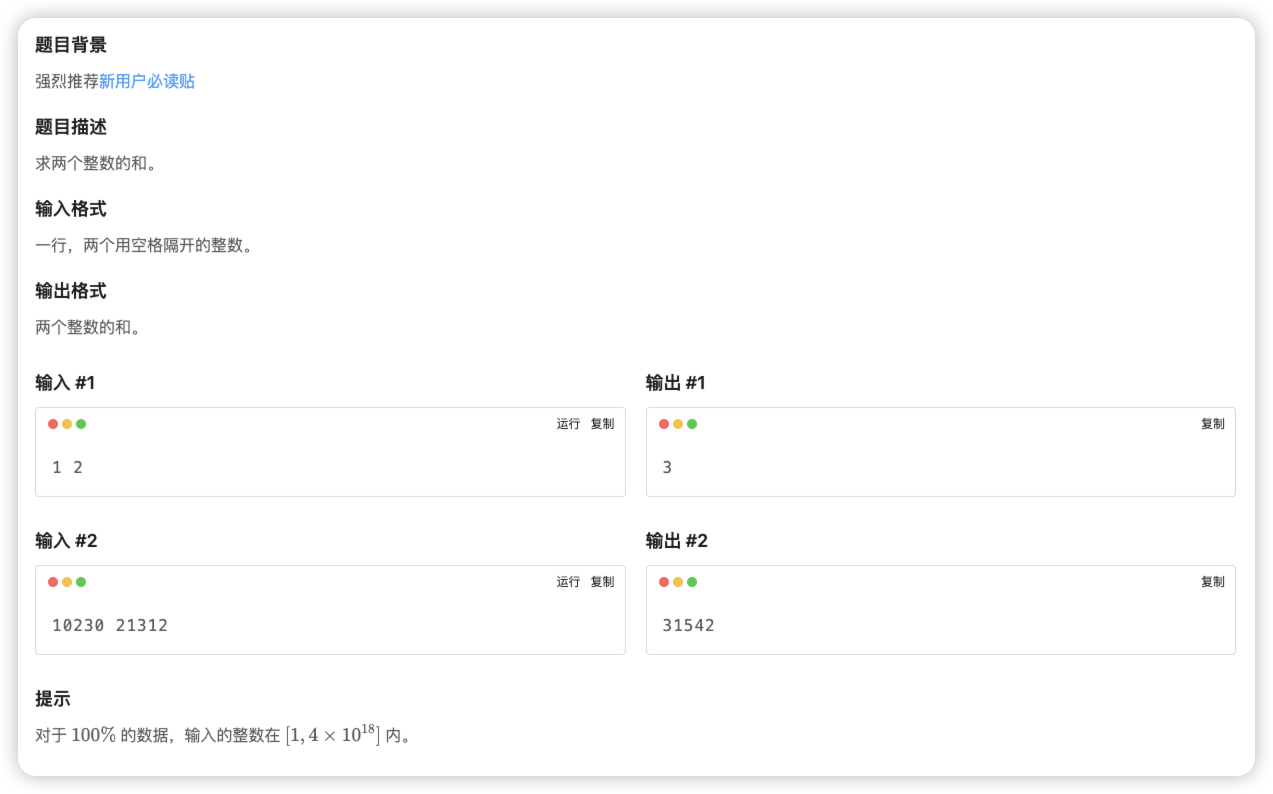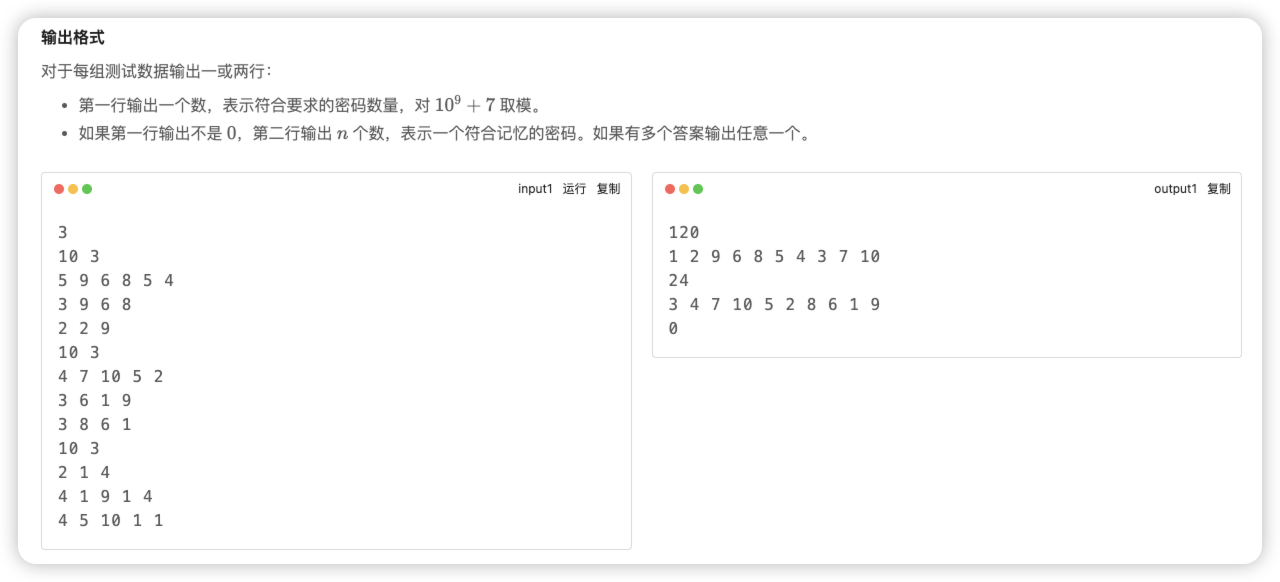C++使用文件重定向优化输入输出【刷题时很有用】
信奥练习的过程中,我们会在各种OJ平台刷题。
比如在核桃OJ上的第一道入门题:
https://htoj.com.cn/cpp/oj/problem/detail?pid=22069046618368
这道题在看今天这篇文章之前,我们可能是这样写的:
#include<iostream>
using namespace std;
int main()
{
long a,b;
cin>>a;
cin>>b;
cout<<a+b<<endl;
return 0;
}但是遇到下面这种输入输出怎么办?
在C++中,我们可以使用重定向文件到标准输入输出流。
比如这道题的程序也可以写成下面这样:
#include <fstream>
#include <iostream>
// #define debug
using namespace std;
void solve() {
long a, b;
cin >> a >> b;
cout << a + b << endl;
}
int main() {
#ifdef debug
ifstream fin("oj/LGB2001_input.txt");
ofstream fout("oj/LGB2001_output.txt");
/***************这部分调试正常后可以删除start***************
if (!fin) {
cerr << "Error opening LGB2001_input.txt" << endl;
}
if (!fout) {
cerr << "Error opening output.txt" << endl;
}
**************这部分调试正常后可以删除end******************/
cin.rdbuf(fin.rdbuf()); // 重定向cin到文件
cout.rdbuf(fout.rdbuf()); // 重定向cout到文件
#endif
solve();
#ifdef debug
fin.close();
fout.close();
#endif
return 0;
}
对上面的程序做一下解释:
#ifdef debug
xxx
#endif这段程序中的xxx 只有在我们显示定义了debug宏后才会运行。
而通过下面四行代码,我们就将oj/LGB2001_input.txt 和 oj/LGB2001_output.txt 分别重定向到了cin和cout上。
接下来的代码中,cin>>就不会从控制台读取输入,而会直接从fin中读取;cout<<也不会写入到控制台,而会写入到fout中。
这样,遇到再长的输入都不用担心了。
比如在本例中,只需要将10230 21312复制到oj/LGB2001_input.txt文件中,程序执行完后,可以在 oj/LGB2001_output.txt 中看到程序运行结果。
如果要调试程序,可以使用 cerr 来进行控制台输出。
ifstream fin("oj/LGB2001_input.txt");
ofstream fout("oj/LGB2001_output.txt");
cin.rdbuf(fin.rdbuf()); // 重定向cin到文件
cout.rdbuf(fout.rdbuf()); // 重定向cout到文件最后,再关闭fin和fout。
这段代码中,真正核心的程序是solve()函数。
本地运行程序的时候,只需要将 #define debug 的注释去掉即可。